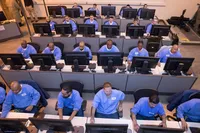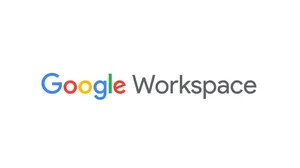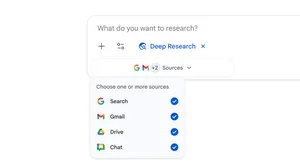The Last Mile grows with Google Workspace Enterprise

Update Feb 2021: G Suite for Nonprofits is now Google Workspace for Nonprofits. We've updated this post to reflect the new brand.
In the United States, as much as 83 percent of formerly incarcerated people return to prison. The Last Mile (TLM) is a nonprofit on a mission to reduce the re-incarceration cycle by creating new pathways to jobs for prison populations. Since 2010, it has provided classrooms to 600 incarcerated men, women and youth across the country, offering a highly competitive coding skills curriculum and becoming one of the most requested prison education programs in the country. Technology has played a huge role in TLM’s growth and is helping to keep the program going despite the COVID-19 pandemic, which is hitting prison populations especially hard. We interviewed Mike Bowie, director of Engineering, to learn more about TLM and how Google Workspace helped them boost efficiency and streamline operations.
What is the story of The Last Mile, and what’s the problem you are trying to solve?
We believe that high-quality education for incarcerated populations is key to providing new opportunities and breaking the re-incarceration cycle. When Chris Redlitz, our cofounder, entered the San Quentin State Prison for the first time in 2010 to speak to a group of men about business and entrepreneurship, he was impressed by the men’s eagerness to learn, and started to nurture the idea of creating a technology accelerator inside the prison.
He started The Last Mile alongside his wife and business partner, Beverly Parenti. Graduates of TLM coding programs in San Quentin now take part in the first-ever web development shop in a US prison. After leaving prison, many TLM graduates enter paid apprenticeships with leading companies, turning their skills into careers and smoothing the way for reentry.

The Last Mile upgraded from Google Workspace for Nonprofits to Enterprise. Why?
As the information services at TLM have evolved, technology needs have also changed. It became clear that we could vastly simplify our service catalog, improve our security posture and streamline our IT operations with this one low-friction transition, so we decided to upgrade to Google Workspace Enterprise. Given the valuable range of functionality Workspace Enterprise already affords us, having Google now offer such reasonable discounts for nonprofits makes it hard to pass up.
Did one or more of the Google Workspace Enterprise features help you solve a challenge that you think most nonprofits might face?
For any organization, people are the most critical component, and in the nonprofit environment, that’s especially true. As part of Workspace Enterprise, we now use Secure LDAP Service as a single identity and access management platform. Staff use the same Google Workspace credentials to log into multiple apps and, in many cases, without re-logging in.
Having standardized on Chromebooks as our platform of choice, we can ensure the key Google Workspace apps for our organization are readily available as soon as the user logs in, and everything is kept up-to-date without the need for significant technical support. A centralized access management system has reduced financial costs, simplified IT management, streamlined staff onboarding and simplified the experiences for everyone who interacted with the complicated and burdensome systems we'd used in the past. Less time spent by IT engineers creating or updating accounts means more time working on things that have a valuable impact on our cause.
How is TLM using Google Workspace to increase collaboration and security?
Google Workspace is the foundation platform for all of our team. Having that familiar, feature-rich set of tools as a starting point for communication and collaboration is key to our productivity. To ensure documentation processes are well detailed, TLM is using enterprise features in Google Meet, including the ability to record meetings and securely store them in Drive.
The IT staff also gets access to security dashboards, reporting and eDiscovery tools. For example, email log helps determine the coverage of phishing campaigns, and eDiscovery gives visibility to phishing engagement. The system alerts IT of any suspicious logins, and gives them the ability to prioritize, investigate and escalate them in the console.
What’s next with The Last Mile?
COVID-19 has posed new challenges. In-person activities have been paused to protect our students and slow the spread of the virus in prison facilities, which are particularly affected by the outbreak. But TLM's momentum isn't stopping. We have 23 classrooms across six states (California, Indiana, Kansas, Oklahoma, Michigan and North Dakota), with plans for rapid expansion. Our goal is to be in 50 classrooms across the country within the next four years. The tech-centric nature of our program has enabled us to continue providing value during the pandemic with remote instructions and recorded content. The efficiency of having a single unified means of managing all of the systems we have further supports our growth.







